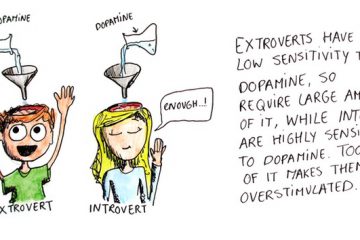The Stress Epidemic
Stress is a harsh reality and the costs associated with it continue to rise each year.
Stress has recently been called the “health epidemic of the 21st century”, by the World Health Organization, and stress and the cost of it is probably one of the biggest challenges that businesses will face in the foreseeable future. (https://www.maltachamber.org.mt/en/workplace-stress-health-epidemic-of-the-21st-century)
According to Forbes “The United States is one of the most stressed out nations in the world.”; with one in three Americans report being extremely stressed. (https://www.forbes.com/sites/lorikozlowski/2013/01/28/getting-america-to-check-in-with-itself/#10cb399ba7a8
Numerous studies show that job stress is far and away the major source of stress for US adults and that it has escalated progressively over the past several decades. (Workplace Stress https://www.stress.org/workplace-stress/)
Workplace Stress has been reported as “The Health Epidemic of the 21st Century“
Highlighted statistics from a report from The National Institute for Occupational Safety and Health (NIOSH):
- 80% of workers feel stress on the job, nearly half say they need help in learning how to manage stress and 42% say their coworkers need such help
- 14% of respondents had felt like striking a coworker in the past year, but didn’t
- 25% have felt like screaming or shouting because of job stress, 10% are concerned about an individual at work they fear could become violent
- 9% are aware of an assault or violent act in their workplace and 18% had experienced some sort of threat or verbal intimidation in the past year

Source: “Stress at Work” NIOSH 99-101
The cost of Stress
A 2008 University of Michigan showed that stress was the #2 contributor to increased health costs. The study showed increased adjusted annual health care expenditures from the following health risks, with depression and stress being the most costly.
- Depression – 70% greater cost
- Stress – 46% greater cost
- Diabetes – 35% greater cost
- Obesity – 21% greater cost
- Smoking – 20% greater cost
- High blood pressure – 12% greater cost
- Lack of exercise – 10% greater cost
A 2015 Forbes article “Workplace Stress Responsible For Up To $190B In Annual U.S. Healthcare Costs” highlights the problem and the cost to the bottom line and individual employee health.
Yet stress management is often not on the radar for many organizations. Some employers assume that stressful working conditions are a necessary evil—that they must turn up the pressure on workers and set aside health concerns to remain productive and profitable in today’s economy. But research findings challenge this belief. Studies show that stressful working conditions are actually associated with increased absenteeism, tardiness, and intentions workers to quit their jobs—all of which have a negative effect on the bottom line. Source: “Stress at Work” NIOSH 99-101
Health care expenditures are nearly 50% greater for workers who report high levels of stress. —Journal of Occupational and Environmental Medicine
According to the 2012 American Psychological Association (APA) study, Stress in America, highly stressed people are:
- Less likely to eat healthily (30%)
- less likely to exercise (25%)
- More likely to fail at weight loss programs (200%)
- Get half as much sleep as people reporting low levels of stress
Stressed workers suffer from fatigue, make more mistakes, and are more likely to be absent than non-stressed employees.
According to data from the Bureau of Labor Statistics, workers who must take time off work because of stress, anxiety, or a related disorder will be off the job for about 20 days.
An estimated one million employees miss work each day because of stress – and this costs companies an average of $702 per employee per year.
Stress is also causing many of the poor lifestyle decisions people are making every day, according to the 2011 APA Stress in America Survey. Here’s why:
- 44% of Americans say they do only a poor/fair job of preventing stress
- 39% report doing only a poor/fair job of managing stress
- 31% report a poor/fair job of fully recovering or recharging from being stressed
This means that at any given time one third to one half of your workforce is suffering under stress and doesn’t know how to cope with it.
Many employers understand the compelling evidence that 75% of the cost of healthcare is preventable with changes in lifestyle. And, with the cost of healthcare continuing to rise dramatically, it pays to make the connection between supporting employees in positive self-care and the pay-off in terms of fewer doctor visits and hospitalizations, fewer sick days and mental health absences and less frazzled and harried employees.
Forward thinking companies are seeing the connection between employee well-being, engagement, productivity, and profits. And they are also seeing that relieving stress, the underlying cause of much unhealthy behavior, makes for more productive and happier employees and for more effective wellness programs that tackle problems like smoking, fitness, and weight loss.
Source: https://www.mequilibrium.com/wp-content/uploads/2013/03/3-1-13-FINAL.pdf
What are you and your organization doing to combat stress and its impact to the bottom line?
Given the fact that Stress is the #2 greater health care cost (more than diabetes, obesity, smoking, high blood pressure, and lack of exercise), what programs have you initiated to lower the impact to your bottom line and the health of your human capital?
The good news is your wellness and stress reduction programs don’t have to cause extra stress. There are evidence based programs that are surprisingly easy to implement and are researched for effectiveness and results.



 Together we will use a proven process for success
Together we will use a proven process for success


0 Comments